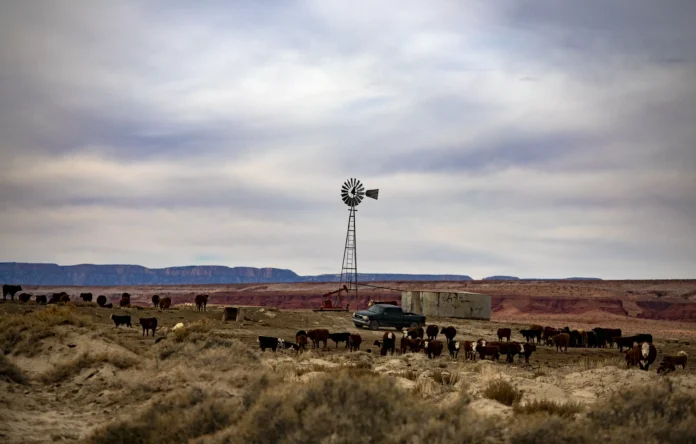Uncontrolled Livestock Grazing Threatens Endangered Plants and Animals in Arizona and New Mexico
A new report has revealed the devastating impact of uncontrolled livestock grazing on streamside habitats in Arizona and New Mexico. The report, released on Wednesday, highlights the urgent need for action to protect these critical areas that are home to endangered plants and animals.
According to the report, which surveyed roughly 2,400 miles of streamside habitats since 2017, half of the areas showed significant harm while 13 percent incurred moderate damage. This alarming finding sheds light on the detrimental effects of uncontrolled livestock grazing on the delicate balance of these habitats.
Streamside habitats, also known as riparian areas, are vital to the survival of many endangered species in Arizona and New Mexico. These areas provide a unique ecosystem that supports a diverse range of plants and animals, including several endangered species such as the Southwestern willow flycatcher and the Chiricahua leopard frog.
However, the uncontrolled grazing of livestock has been causing significant damage to these habitats. Livestock, such as cattle and sheep, trample on the vegetation, disturb the soil, and pollute the water sources. This not only destroys the natural habitat of these endangered species but also affects the quality of the water, making it unsuitable for their survival.
The report also highlights the impact of overgrazing on the native plant species in these areas. As the livestock graze on the vegetation, they prevent the growth of new plants, leading to a decline in the overall biodiversity of the habitat. This, in turn, affects the food chain and disrupts the natural balance of the ecosystem.
Furthermore, the report found that uncontrolled grazing has also resulted in soil erosion and increased sedimentation in the streams, which can have a devastating impact on aquatic life. The sedimentation can smother the eggs of fish and other aquatic species, leading to a decline in their population.
The consequences of uncontrolled livestock grazing are not limited to the streamside habitats alone. It also has a ripple effect on the surrounding areas, affecting the overall health of the ecosystem. The report warns that if immediate action is not taken, the damage to these habitats will be irreversible, and the endangered species that rely on them will face an uncertain future.
Fortunately, there are solutions to address this issue. The report suggests implementing responsible grazing practices, such as rotational grazing, which allows the vegetation to recover and prevents overgrazing. It also recommends the use of fencing and other methods to control the movement of livestock and protect sensitive areas.
Moreover, the report emphasizes the need for collaboration between landowners, government agencies, and conservation groups to develop and implement effective management plans for these habitats. By working together, we can ensure the protection of these critical areas and the endangered species that call them home.
The findings of this report serve as a wake-up call for all of us to take action and protect our natural heritage. We cannot afford to lose these unique and valuable habitats and the endangered species that rely on them. It is our responsibility to ensure that future generations can also experience the beauty and diversity of these areas.
In conclusion, the report highlights the urgent need for responsible management of livestock grazing in streamside habitats in Arizona and New Mexico. It is time for us to take action and protect these critical areas that are home to endangered plants and animals. Let us work together to preserve our natural heritage and ensure a sustainable future for all.

